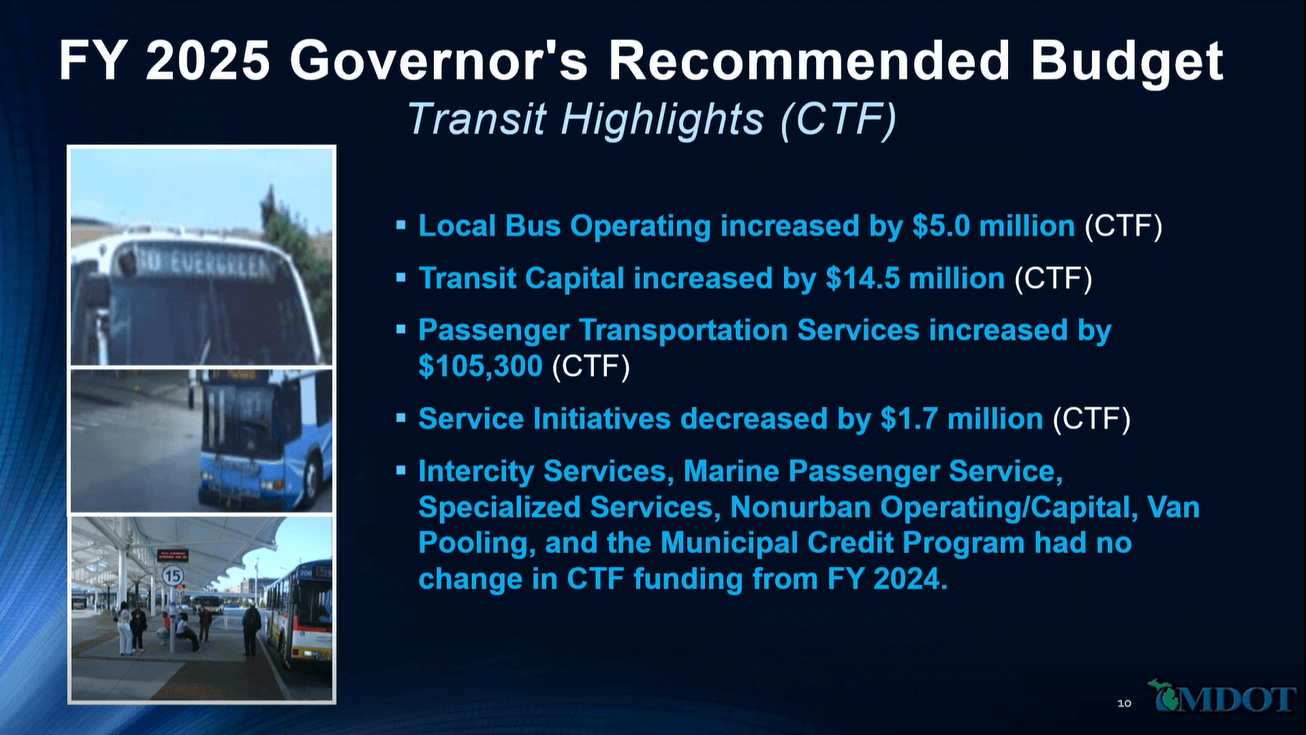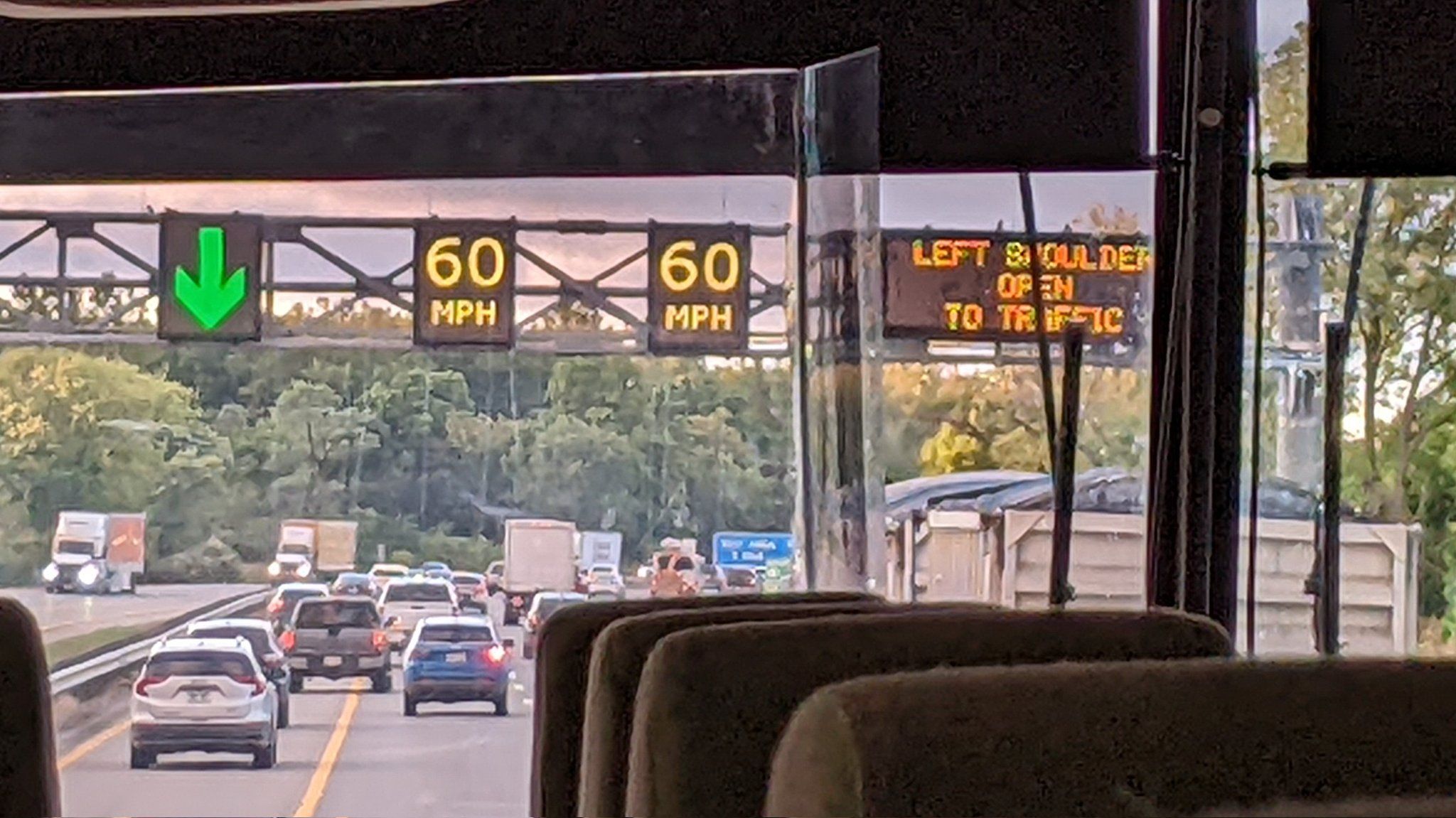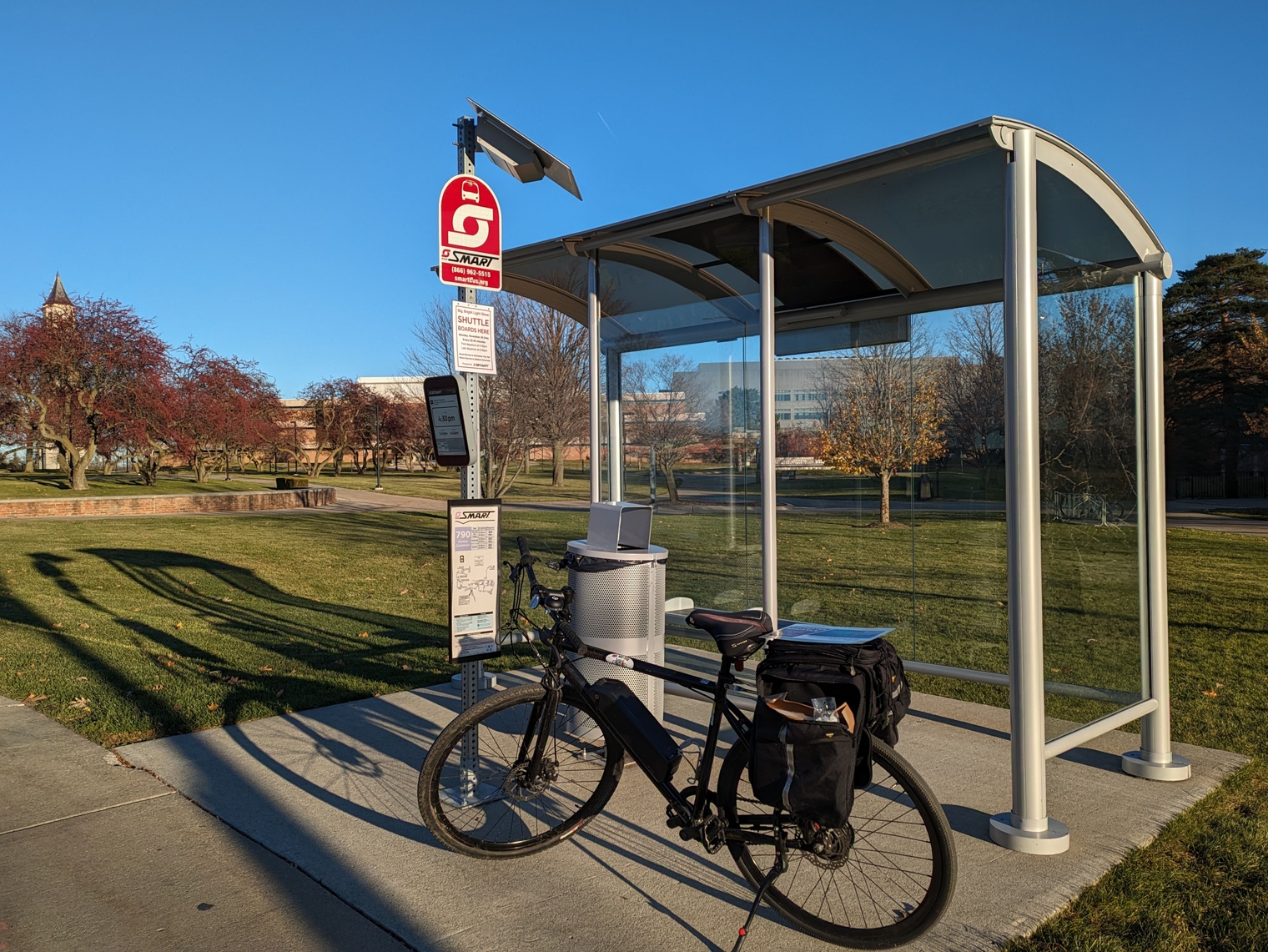102nd Legislature, Week 41: The Executive Transportation Budget, Safe Speed Limits

MDOT presents the Governor's annual budget recommendation to the House Appropriations Subcommittee on Transportation.
Governor Whitmer Presents the Executive Budget
On Wednesday, February 7th, Governor Whitmer presented her FY24-25 Executive Budget recommendations before the House and Senate Appropriations committees in Heritage Hall. Following this presentation, Sen. McMorrow (D-Royal Oak) and Rep. Morgan (D-Ann Arbor) asked Budget Director Jen Flood to expand upon whether this budget adequately supported public transit expansion in Michigan.
The Executive Budget proposes $221M for Local Bus Operations (LBO) and $259M for transit capital investments. This is a $40M+ boost in capital from the current FY23-24 budget and a $5M boost in base-level LBO funding, but an effective $40M reduction in LBO overall due to the removal of one-time American Rescue Plan Act (ARPA) funds allocated last year. TRU and other transit allies urge the legislature to find a way to match those ARPA dollars at minimum, and ideally, further increase LBO dollars; we cannot afford to pull this funding increase away from our transit agencies as they are already struggling to hire enough operators and mechanics to maintain service, let alone expand.
Regarding rail, the Executive budget proposes $152M, the same as the current budget including the $14.9M increase enacted by the legislature last year. The $20M in high speed rail study grants as well as the grade separation fund are both still present, plus any federal money the state receives from the Corridor ID grant awarded to MDOT to improve our three state-supported Amtrak routes.
Growing Michigan Together Council Presentation
On Wednesday, February 14th and Thursday, February 15th, MDOT Director Brad Wieferich, P.E. and MDOT Director of Bureau of Finance and Administration Patrick McCarthy, CPA gave a presentation to the House and Senate Appropriations Subcommittees on Transportation, respectively. In the House Appropriations subcommittee, Chair Puri (D-Canton) , Rep. Steckloff (D-Farmington Hills) , and Vice Chair Morgan (D-Ann Arbor) questioned MDOT on the LBO decrease and how money might be redirected from the general fund to address the issue. The grade separation funds from last year, which were also a one-time allocation, were discussed as well. MDOT expressed willingness to come before the committee again with further information.
Important clarification! In this clip, Rep. Steckloff references her ongoing conversation with MDOT and Amtrak regarding the removal of the crew base at the Battle Creek station . There are no plans to close the train station itself or discontinue Amtrak service to Battle Creek in any way.
Additionally, Rep. Morgan raised the issue of MDOT’s continued expansion of highways in Michigan, despite a lack of revenue to continue maintaining the roads we currently have. MDOT responded by highlighting their Flex lanes on US-23 north of Ann Arbor, which are also being installed along I-96 in Novi, and the new HOV lane on I-75 between Square Lake Road and Twelve Mile.
Yes, MDOT, we are aware of your Flex Lanes, which have done little if anything to mitigate slowdowns and frequent collisions on US-23, and the new HOV lane, which almost certainly will not put any measurable dent in vehicular traffic on I-75 due to its location and relatively short length.
If you’re not familiar, this is MDOT’s “Flex Lane” setup, which allows drivers to use the shoulder during periods of peak traffic:

MDOT paved the shoulder, put a fancy sign above it, and called it innovation – and now, even after all that, STILL wants to widen the expressway ! It’s an admission of failure. These Flex lanes were yet another futile attempt at moving more cars faster instead of giving Michiganders more efficient, reliable transportation options. Building more and more highway miles seems to be the only “solution” the Department knows.
We need to fund transit operations, MDOT. I'm not sure how many other ways we can say it.
The full recording of the committee meeting is available on House TV .
The Senate Discusses Speed Limits: House Bill 4012
HB 4012 , sponsored by Rep. Slagh (R-Zeeland), is a re-introduction of HB 4014 from the 2021-22 Legislative Session, which never received a hearing in committee. In short, this bill will remove the requirement for an Engineering and Safety Study when a county or local municipality wishes to modify the speed limit on a state-owned highway. Such studies adhere to the 85th Percentile Speed , which in some cases has resulted in a speed limit increasing even when a municipality initiated a study with intent to lower it. Removing this requirement gives municipalities the flexibility to set lower, safer speed limits down to the 50th Percentile Speed.
At the February 13th meeting, members of the Senate Committee on Transportation and Infrastructure openly agreed that 85th Percentile Speed is unscientific and expressed unanimous support of this bill. The League of Michigan Bicyclists , the Detroit Greenways Coalition, officials from the City of Ann Arbor, SEMCOG, and TRU all support this bill as well.
In order of appearance: Senator Chang, Senator McBroom, Rep. Slagh, John LaMacchia of the Michigan Municipal League, Matt Penniman of LMB, and Todd Scott of the Detroit Greenways Coalition. LaMacchia and Penniman also offered testimony in support of this bill before the House Transportation committee in June 2023 .
Senate Bill 682: Mackinac Island and E-Bikes
Introduced by Senator Damoose (R-Harbor Springs), SB 682 would set the speed limit on “a highway or street closed to nonemergency vehicles” to 15 miles per hour. This tiny bill flew under my radar until this committee meeting revealed it was written with Mackinac Island in mind; specifically, e-bikes.
In order of appearance: Senator Damoose, Mackinac Island Mayor Margaret Doud, Matt Penniman of LMB, and Todd Scott of Detroit Greenways
Officially, Mackinac Island allows Class 1 e-bikes only, for disabled individuals only. But state police can’t question people on whether they’re disabled, so the rule has proven difficult for the island to enforce due to the sheer popularity and prevalence of electric bikes. This bill would set a speed limit of 15mph on M-185, Mackinac Island’s ring road, which currently has no speed restriction. The idea is to move to enforcement by speed for all cyclists as opposed to banning specific e-bikes.
This bill isn’t without flaws that still need to be addressed, however. Both Matt Penniman from the League of Michigan Bicyclists and Todd Scott from the Detroit Greenways Coalition testified in opposition to this bill as currently written due to concerns with the bill’s scope. There’s no guarantee that the effects of SB 682 would be limited to Mackinac Island. Hines Drive in Metro Detroit, for example, is “a street closed to nonemergency motor vehicles” on Saturdays during the summer. Penniman also emphasized that this bill is holding cyclists to a different, lesser standard than motorists and that any tools given to Mackinac Island in the interest of safety for cyclists should also be available to other cities in Michigan.
The bill will remain in committee pending further amendments.
The full recording of the Senate committee is available on Senate TV .
A personal word on e-bikes as a form of transportation
I’ve been the enthusiastic owner of a Detroit Bikes E-Sparrow , a budget-friendly Class 2 e-bike with a rear trunk bag large enough to hold groceries and accomplish other errands, since Spring 2021. I don’t speak lightly when I say it’s been a life-changing and perspective-altering experience: Paired with reliable transit, it allowed me to live in Lansing for an entire year without needing a car. If there’s one thing state legislators can discuss besides bus service that’ll prompt me to leap into the conversation, it’s e-bikes.

I will never stop talking about this thing. Yes, I’ve become one of Those People. You will, too, if you ever have the chance to use an e-bike for daily errands in a city or suburb where the infrastructure caters to it.
I would love to be able to bring my e-bike, which is currently my only bike, onto Mackinac Island, and I would also love to feel safer riding it in other cities across Michigan. As with many models, my bike is capped by design at 17mph and while it has no speedometer, the difference between its max speed and the proposed 15mph speed limit in terms of safety is effectively inconsequential. Compare that to an average car which is capable of speeds far in excess of the typical limit of 25mph found on residential streets. Sometimes I take the lane on slow roads with light traffic, but the majority of the time I’m riding on multi-use pathways and, when necessary for safety due to a lack of protected infrastructure, sidewalks. Unlike a car, I never need to travel more than 20mph on my bike, nor would I personally feel safe doing so in most situations. It’s a bike, not a motorcycle.
I’ve encountered a lot of linear trails that permit the use of Class 1 e-bikes, but prohibit the operation of Class 2 models. This is a battle I do choose to fight: I believe Class 2 e-bikes should be allowed anywhere Class 1s are, and this includes Mackinac Island. Commercially available Class 1 and Class 2 e-bikes are limited by state law to the same max power output (≤750 watt motors) and the same top speed (20mph). The throttle is the only difference. Think of it like cruise control in a car: It doesn’t make you accelerate any faster and doesn’t change how you brake, it just means you don’t have to keep your foot on the gas. When you hit heavy traffic, what do you do? You turn cruise control off. Same principle with a Class 2 e-bike: When I’m in a busy space, I don’t use the throttle. Having one doesn’t make an e-bike more dangerous; it simply makes it more accessible and easy to use as a mode of transportation for people who wouldn’t otherwise consider replacing car trips with bike trips.
People always say, “But how will we stop e-bikes from going too fast??” First off, an experienced cyclist can EASILY exceed 15mph on a bike without electric assist. Anecdotally, I’ve been left in the dust while at full power by people in training gear pushing 30mph on busy shared-use pathways where they shouldn’t be. When I’m on a sidewalk or a multi-use pathway I always yield to people on foot as the law requires me to do while riding a bike. Second: Think about the double standard of this mindset. The speedometer in your car goes over 100mph, what’s stopping you from driving that fast? What’s stopping you from hitting a pedestrian or driving your car through the wall of a building ? Socially, we love to scrutinize every potential danger of a bike while willfully turning a blind eye to the dangers of motor vehicles, which are objectively much greater. We have rules and regulations that we just expect drivers to follow, and we can expect the same of cyclists without imposing unnecessary restrictions. It’s a question of enforcement and street design in both cases. Always has been.
(On the subject of e-bikes for transportation: Let’s restart a conversation about putting the funds for House Bill 4491 back into the budget this year!)